Torino
Il ponte che da piazza Vittorio Veneto attraversa il fiume Po per raggiungere la chiesa della Gran Madre e le colline torinesi, fu fatto invece erigere per volere di Napoleone Bonaparte come regalo alla città sostituendo un precario ponte in legno già compromesso durante la piena del fiume del 1706.La curiosità riguarda il fatto che, durante la sua costruzione iniziata nel 1810, fu murata all’interno del pilone centrale una cassa di piombo contenente a sua volta una cassetta in legno di cedro a custodire 88 medaglie e monete d’oro. Quando Napoleone fu infine esiliato a Sant’Elena, i lavori del ponte non erano ancora del tutto ultimati, ma la cassa faceva ormai parte integrante del pilone!Attraversando il fiume, si giunge alla chiesa della Gran Madre e c’è chi afferma che sia stata volutamente fatta erigere nello stesso luogo dove primitive popolazioni celebravano il culto della dea Iside, chiamata anche Grande Madre.
Iside, dea della fertilità, era contraddistinta da una carnagione scura quasi ad emulare il Nilo che nei periodi di piena trasportava sulle rive una terra nera e fertile, il limo. Ad avvalorare questa tesi, forse il fatto che nei sotterranei della Gran Madre si celi proprio la statua di una Madonna nera.I fatti comprovati dalla storia ci raccontano un’altra versione: la chiesa, il cui nome completo è Gran Madre di Dio, fu costruita nel 1814 per festeggiare il ritorno in patria del re Vittorio Emanuele I per l’esilio forzato in Sardegna a causa dell’occupazione napoleonica.Sul timpano del tempio si legge chiaramente un epigrafe in latino:ORDO POPULUSQUE TAURINUS OB ADVENTUM REGIS. Il cui significato è ‘La nobiltà (o la città) ed il popolo di Torino per il ritorno del re’.
Secondo un’interpretazione esoterica, l’Ordo taurinus potrebbe però essere interpretato come un saluto ad un Ordine Taurino, il popolo celtico che viveva in queste terre prima dell’arrivo dei romani.Infine, ai lati della chiesa sono state disposte due statue che rappresentano la Fede (che solleva un calice e tiene una Bibbia in grembo) e la Religione (che sorregge una croce). Gli esoteristi affermano che la statua della Fede nasconda un messaggio segreto che indichi dove sia celato il Santo Graal, il sacro calice utilizzato da Gesù Cristo durante l’Ultima cena. Una versione vorrebbe che il Santo Graal sia sepolto ai piedi della statua.
L’altra, ormai diffusamente conosciuta, asserirebbe che lo sguardo della Fede indichi il punto dove sia nascosta la sacra reliquia. Il problema è che la statua è stata scolpita priva di pupille e, quindi, determinare il luogo da lei indicato è praticamente impossibile.Fede e religione sono i simboli per eccellenza dell’istituzione della Chiesa. Se si osservano le statue proprio sotto un profilo simbologico, si noteranno delle inesattezze. Se la statua reggesse realmente tra le mani in Sacro Graal, allora sarebbe corretto ipotizzare che la figura della Fede sia la personificazione di Maria, la madre di Gesù. Ma la Madonna in questo caso indossa un velo dalle fattezze e dal taglio romano, non certamente ebraico. Uno studioso afferma inoltre che la statua della Religione sieda sopra (o che abbia ai suoi piedi) una tiara, il copricapo papale simbolo della sovranità della chiesa.
Questo suggerirebbe l’imminente fine dell’istituzione della Chiesa. Teorie onestamente tirate un po’ per capelli, ma, a questo riguardo, è interessante citare un’interpretazione di una profezia di Nostradamus secondo la quale “il potere secolare della chiesa cadrà partendo da una città bagnata da due fiumi”. Facile fare un’associazione mentale con Torino, se si aggiunge anche che il veggente… la visitò di persona! di William Facchinetti Kerdudo
The bridge that from Piazza Vittorio Veneto crosses the river Po to reach the church of the Gran Madre and the hills of Turin, was built instead by Napoleon Bonaparte as a gift to the city replacing a precarious wooden bridge already compromised during the flood of the river 1706.
The curiosity concerns the fact that, during its construction started in 1810, a lead box was walled inside the central pylon, containing in turn a cedar wood box to store 88 medals and gold coins. When Napoleon was finally exiled to Saint Helena, the works of the bridge were not yet completely completed, but the crate was now an integral part of the pylon!
Crossing the river, we reach the church of the Gran Madre and some say it was deliberately erected in the same place where primitive populations celebrated the cult of the goddess Isis, also called the Great Mother.
Isis, goddess of fertility, was characterized by a dark complexion almost emulating the Nile that during the floods carried a black and fertile land, the silt on the banks. To corroborate this thesis, perhaps the fact that in the basement of the Gran Madre there is precisely the statue of a black Madonna.
The facts proven by history tell us another version: the church, whose full name is Gran Madre di Dio, was built in 1814 to celebrate the return of King Vittorio Emanuele I to his homeland due to forced exile in Sardinia due to the Napoleonic occupation.
On the tympanum of the temple there is clearly an epigraph in Latin:
ORDO POPULUSQUE TAURINUS OB ADVENTUM REGIS
whose meaning is 'The nobility (or the city) and the people of Turin for the return of the king'.
According to an esoteric interpretation, the Ordo taurinus could however be interpreted as a greeting to a Taurine Order, the Celtic people who lived in these lands before the arrival of the Romans.
Finally, on the sides of the church two statues were placed representing the Faith (which lifts a cup and holds a Bible in her lap) and Religion (which holds a cross). Esotericists claim that the statue of the Faith hides a secret message indicating where the Holy Grail is hidden, the sacred chalice used by Jesus Christ during the Last Supper. One version would like the Holy Grail to be buried at the foot of the statue.
The other, now widely known, would assert that the gaze of the Faith indicates the point where the sacred relic is hidden. The problem is that the statue has been sculpted without pupils and, therefore, to determine the place indicated by you is practically impossible.
Faith and religion are the symbols par excellence of the institution of the Church. If you look at the statues right under a symbological profile, you will notice inaccuracies. If the statue really held in the hands of the Holy Grail, then it would be correct to hypothesize that the figure of the Faith is the personification of Mary, the mother of Jesus. But the Madonna in this case wears a veil with features and Roman cut, certainly not Jewish. A scholar also claims that the statue of Religion sits above (or at its feet) a tiara, the papal headdress symbolizing the sovereignty of the church.
This would suggest the imminent end of the institution of the Church. Theories are honestly drawn by hair, but, in this regard, it is interesting to quote an interpretation of a prophecy of Nostradamus according to which "the secular power of the church will fall from a city bathed by two rivers". Easy to make a mental association with Turin, if you also add that the seer ... visited it in person!
by William Facchinetti Kerdudo
Die Brücke von der Piazza Vittorio Veneto Überquerung des Flusses Po in die Großen Mutter Kirche und die Hügel der Stadt, wurde anstelle von Napoleon Bonaparte als Geschenk an die Stadt durch Ersetzen einer prekäre Holzbrücke bereits kompromittiert während der Flut des Flusses gebaut Genommen 1706.La Neugier ist die Tatsache, dass während der Bauphase im Jahr 1810 begann, wurde im Inneren der zentralen Säule einer bleiernen Kiste mit sich selbst eine Zeder Box Medaillen und 88 Goldmünzen zu schützen vermauert. Als Napoleon schließlich nach St. Helena verbannt wurde, wurde die Arbeit der Brücke noch nicht vollständig abgeschlossen, aber der Fall war jetzt ein wesentlicher Bestandteil des Pylons! Überquerung des Flusses kommen wir an der Gran Madre Kirche und andere behaupten, dass es Es wurde absichtlich am selben Ort errichtet, an dem primitive Völker den Kult der Göttin Isis feierten, die auch die Große Mutter genannt wird.
Isis, Fruchtbarkeitsgöttin, zeichnete sich durch einen dunklen Teint aus, der fast dem Nil entsprach, der während der Fluten ein schwarzes und fruchtbares Land, den Schlick an den Ufern, trug. Um diese Theorie zu unterstützen, vielleicht, dass die Tatsache, im Keller der Großen Mutter lauert nur eine Statue einer Madonna nera.I bewiesen Fakten aus der Geschichte erzählen Sie uns von einer anderen Version: die Kirche, deren vollständiger Name ist der Große Mutter Gottes, war im Jahre 1814 gebaut, um die Heimkehr des Königs Vittorio Emanuele feiere ich wegen der Besetzung napoleonica.Sul Giebel des Tempels lesen wir eindeutig eine Inschrift in lateinischer Sprache Exil in Sardinien gezwungen: Ordo Populusque taurinus OB Adventum REGIS. Die Bedeutung davon ist "Der Adel (oder die Stadt) und die Leute von Turin für die Rückkehr des Königs".Gemäß einer esoterischen Interpretation könnte der Ordo Taurinus jedoch als Gruß an einen Taurinorden interpretiert werden, das keltische Volk, das in diesen Ländern vor der Ankunft der Römer lebte. Schließlich waren an den Seiten der Kirche zwei Statuen vertreten der Glaube (der eine Tasse hebt und eine Bibel in ihrem Schoß hält) und Religion (die ein Kreuz hochhält). Esoteriker behaupten, dass die Statue des Glaubens eine geheime Botschaft verbirgt, die anzeigt, wo der Heilige Gral versteckt ist, der heilige Kelch, den Jesus Christus während des Letzten Abendmahls benutzte. Eine Version möchte, dass der Heilige Gral am Fuße der Statue begraben wird.
Der andere, jetzt weithin bekannte, würde behaupten, dass der Blick des Glaubens den Punkt anzeigt, wo die heilige Reliquie verborgen ist. Das Problem ist, dass die Statue ohne Schüler geschnitzt wurde und daher den von Ihnen angegebenen Ort praktisch unmöglich macht: Glaube und Religion sind die Symbole schlechthin der Institution der Kirche. Wenn Sie die Statuen direkt unter einem symbolischen Profil betrachten, werden Sie Ungenauigkeiten bemerken. Wenn die Statue wirklich in den Händen des Heiligen Grals gehalten wird, dann wäre es richtig anzunehmen, dass die Figur des Glaubens die Personifikation von Maria, der Mutter Jesu, ist, aber die Madonna trägt in diesem Fall einen Schleier mit Gesichtszügen und römischem Schnitt, ganz sicher nicht Hebräisch. Ein Gelehrter behauptet auch, dass die Statue der Religion über (oder zu seinen Füßen) eine Tiara, der päpstliche Kopfschmuck, der die Souveränität der Kirche symbolisiert, sitzt.
Dies würde auf das bevorstehende Ende der Institution der Kirche hindeuten. Theorien sind ehrlich von Haaren gezeichnet, aber in dieser Hinsicht ist es interessant, eine Interpretation einer Prophezeiung von Nostradamus zu zitieren, nach der "die weltliche Macht der Kirche aus einer Stadt, die von zwei Flüssen gebadet wird, fallen wird". Es ist einfach, eine geistige Verbindung mit Turin zu schaffen, wenn Sie auch hinzufügen, dass der Seher ... es persönlich besucht hat!
von William Facchinetti Kerdudo
Le pont de la Piazza Vittorio Veneto traversant la rivière Po à la Grande Mère Eglise et les collines de la ville, fut pris construit par Napoléon à la place Bonaparte comme un cadeau à la ville par le remplacement d'un pont en bois précaire déjà compromise lors de l'inondation de la rivière 1706. La curiosité porte sur le fait que, lors de sa construction en 1810, une boîte de plomb a été murée à l'intérieur du pylône central, contenant à son tour une boîte en bois de cèdre pour stocker 88 médailles et pièces d'or. Lorsque Napoléon fut finalement exilé à Sainte-Hélène, les travaux du pont n'a pas été encore complètement terminé, mais le cas était désormais partie intégrante du pylône! Traversée de la rivière, nous arrivons à l'église Gran Madre et d'autres prétendent qu'il est Il a été délibérément érigé au même endroit où les populations primitives célébraient le culte de la déesse Isis, aussi appelée la Grande Mère.
Isis, déesse de la fertilité, se caractérisait par un teint sombre imitant à peu près le Nil qui, pendant les inondations, portait une terre noire et fertile, le limon sur les rives. Pour appuyer cette théorie, peut-être le fait que, dans le sous-sol de la Grande Mère se cache juste une statue d'une Vierge nera.I faits prouvés de l'histoire nous raconter une autre version: l'église, dont le nom complet est la Grande Mère de Dieu, était construit en 1814 pour célébrer le retour à la maison du roi Vittorio Emanuele I exil forcé en Sardaigne en raison de l'occupation pignon napoleonica.Sul du temple, nous lisons clairement une inscription en latin: Ordo Populusque Taurin OB adventum REGIS. La signification de ce qui est «La noblesse (ou la ville) et le peuple de Turin pour le retour du roi». Selon l'interprétation ésotérique, Toutefois, Ordo taurinus, pourrait être interprété comme un hommage à un ordre Taurino, les Celtes qui vivaient dans ces terres avant l'arrivée des romani.Infine, les côtés de l'église ont été placées deux statues représentant la foi (qui soulève une tasse et tient une bible sur ses genoux) et la religion (qui soutient une croix). Les ésotéristes affirment que la statue de la foi cache un message secret indiquant où le Saint-Graal est caché, le calice sacré utilisé par Jésus-Christ pendant la dernière Cène. Une version voudrait que le Saint Graal soit enterré au pied de la statue.
L'autre, maintenant largement connu, affirmerait que le regard de la Foi indique le point où la relique sacrée est cachée. Le problème est que la statue a été sculptée sans élèves, et donc de déterminer le lieu que vous avez indiquée est pratiquement impossibile.Fede et la religion sont les symboles de l'institution par excellence Eglise. Si vous regardez les statues juste sous un profil symbologique, vous remarquerez des inexactitudes. Si la statue serait vraiment régner entre ses mains dans le Saint-Graal, il serait correct de supposer que la figure la foi est la personnification de Marie, la mère de Jésus. Mais la Vierge dans ce cas, le port d'un voile en vedette et coupe romaine, certainement pas hébreu. Un érudit prétend également que la statue de la Religion se trouve au-dessus (ou à ses pieds) d'une tiare, la coiffe papale symbolisant la souveraineté de l'église.
Cela suggérerait la fin imminente de l'institution de l'Église. Les théories tirent honnêtement un peu les cheveux, mais, à cet égard, il est intéressant de mentionner une interprétation d'une prophétie de Nostradamus que « le pouvoir séculaire de l'église tombera d'une ville baignée par deux rivières. » Facile de faire une association mentale avec Turin, si vous ajoutez aussi que le voyant ... l'a visité en personne!
par William Facchinetti Kerdudo
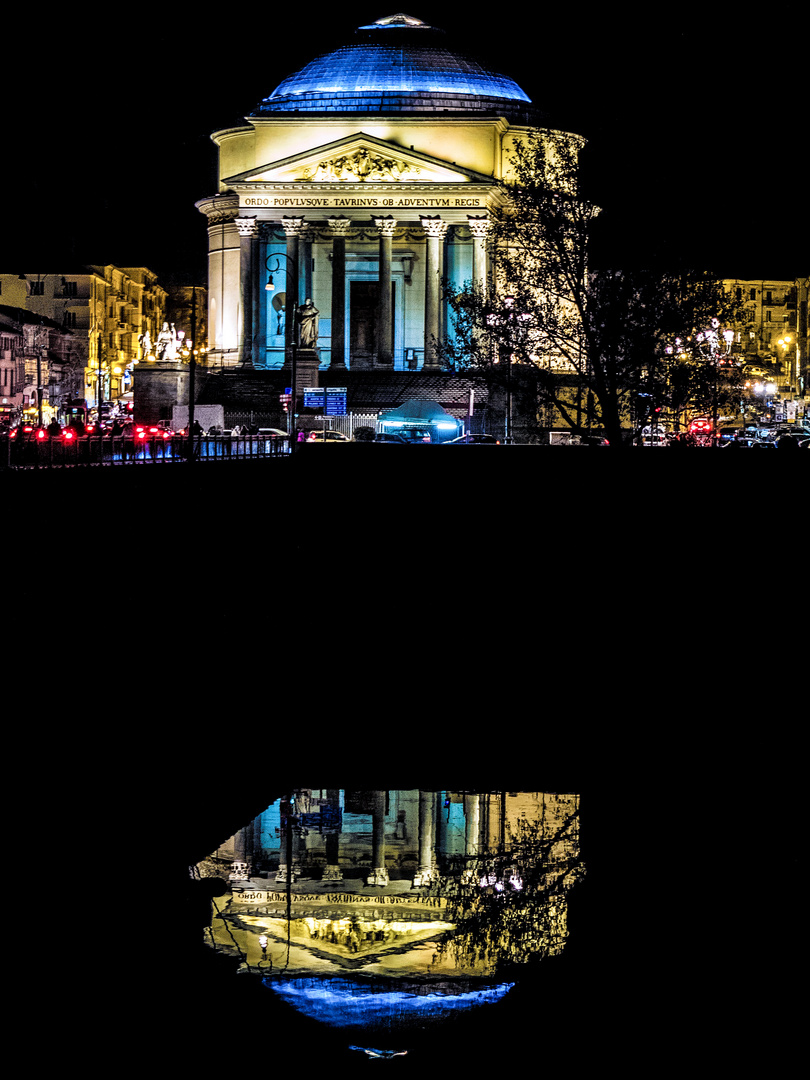








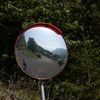
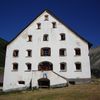

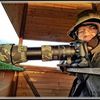

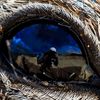





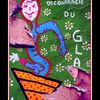
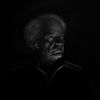


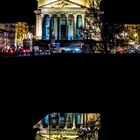
dudaffa 26/01/2018 10:56
Eine wunderbare Nachtaufnahme mit einem zusätzlich interessanten Text.VG Norbert
Rolweber - Cherokee 07/01/2018 18:56
Mystisch schön, ein farbliches Nachtgemälte in der Stadt mit Wasserspiegelung !!!!Massimo prima ..
lg Rolf
Henry Nees 30/12/2017 16:09
Ein feines Motiv und eine gute Beschreibung, gefällt mir sehr gut.LG Henry
Matzel58 28/12/2017 17:05
erinnert mich an irgendwie Glaskunst - wunderschön leuchtend !LG rita
Jojo. 27/12/2017 14:28
Mancho 26/12/2017 22:45
Bella foto notturna impreziosita dal riflesso speculare.Buona luce.
Rolf Paul Fütterer 24/12/2017 15:55
Als ein Licht die Nacht durchbrach,da gab es eingroßes Staunen...
Frohe Weihnacht wünscht der Rolf
Enrico Franchi 24/12/2017 14:14
molto interessante . complimenti. ciaoTante Mizzi 24/12/2017 12:54
Eine sehr schöne Nachtaufnahme mit toller Spiegelung !!!Liebe Grüße
Mizzi
Patrick Riancho 24/12/2017 8:53
Une photo de nuit réussite avec un beau reflet.Gruß. Patrick
Lucia Durante 23/12/2017 23:56
Torino é città di misteri e di esoterismo, ho avuto la fortuna di visitarla varie volte e di scoprire alcuni di questi aspetti che sfuggono ad un visitatore superficiale. Anche la tua foto ad un primo sguardo mi é sembrata misteriosa e magica con quei colori così vividi (luci di artista) e quel riflesso. Poi ho capito e spero di non sbagliare che é il Po.Buone feste. LuciaCoquitte 23/12/2017 22:59
Muy b uena toma y fantasticos los reflejos. Felices Fiestas Massimo.fotogroschi 23/12/2017 21:56
Herrlich!buon natale
† werner.radtke 23/12/2017 21:11
Sehr schön mit der Spiegelung.Klasse.
LG Werner
Charly08 23/12/2017 21:02
Wunderschön mit der Spiegelung.LG Gudrun